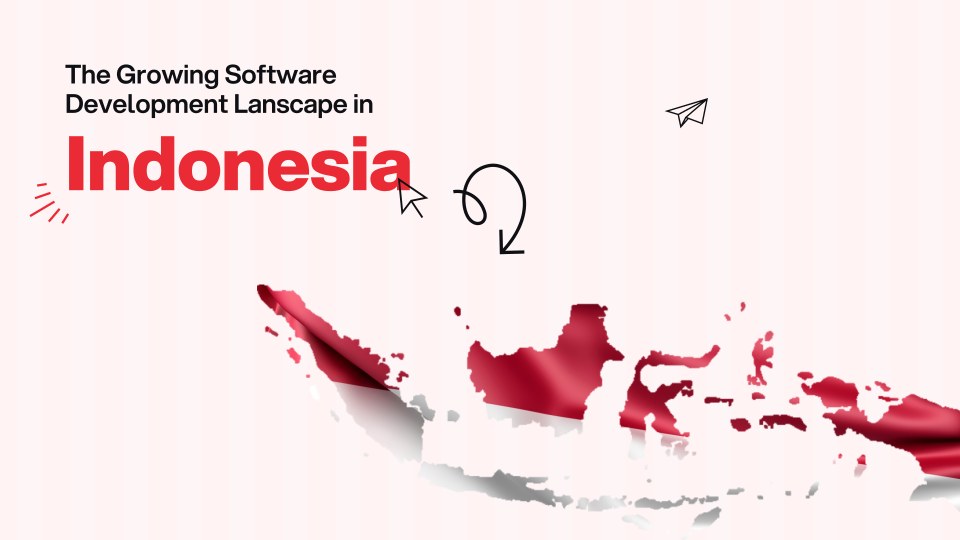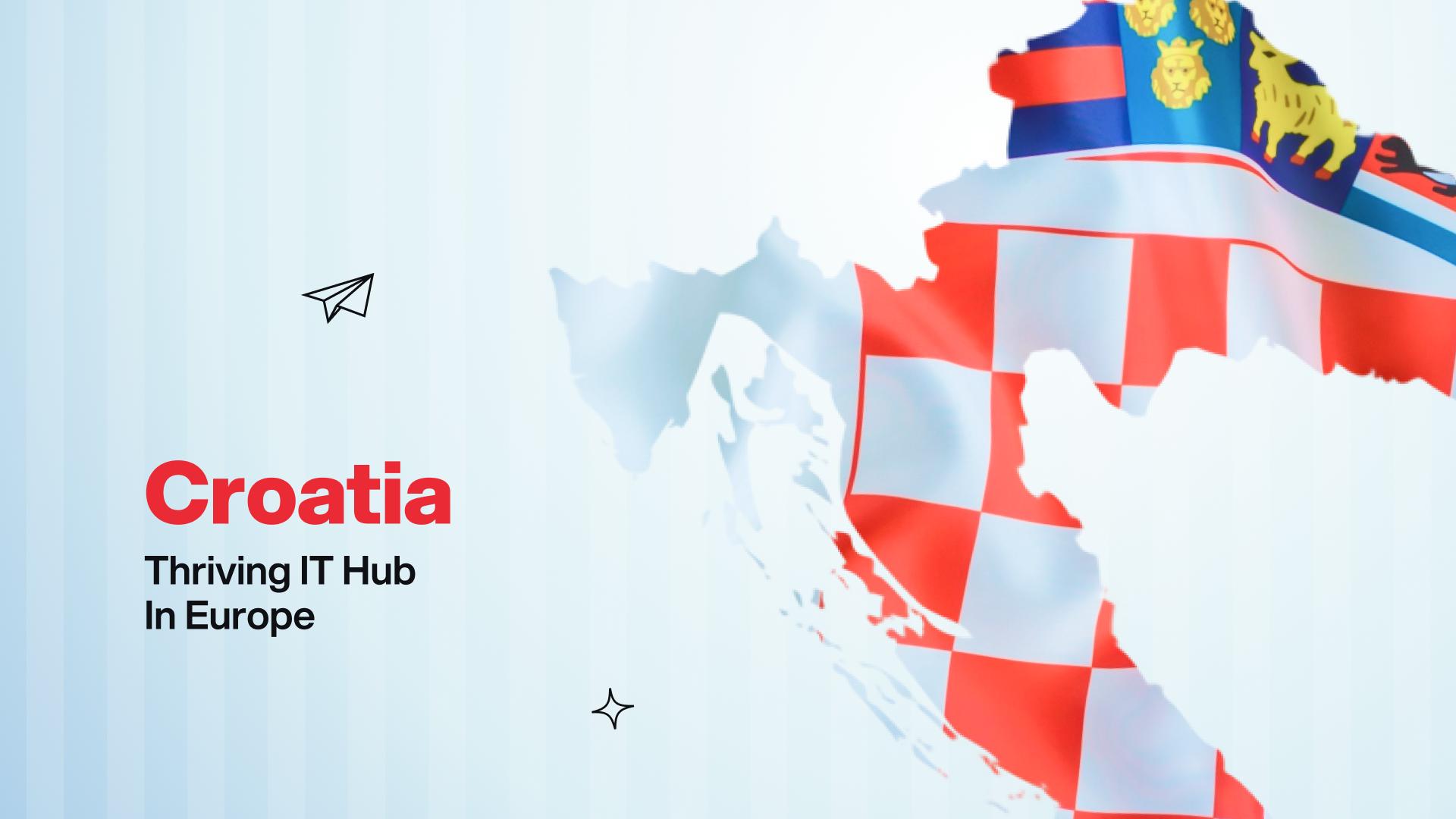Post Activity
 335
335
Table of Content
Share This Post
Table of Content
The United States stands as a titan in digital innovation and a top consumer of IT outsourcing services. American companies reply on software outsourcing to meet rising digital demands, optimize labor costs, and access specialized tech professionals. This dual role as a technology pioneer and a major outsourcing client positions the US as a cornerstone of the global IT services landscape, supported by a robust digital infrastructure and a clear national AI strategy.
Strategic Drivers of IT Outsourcing
i. Why the US Outsources
- Reduces high labor costs, with software engineers earning over $120,000 annually.
- Addresses talent shortages in fields like AI development and cybersecurity.
- Accelerates time-to-market and enhances project efficiency.
- Frees internal teams for innovation and core business strategy.
- Enables 24/7 development for faster delivery of software solutions.
ii Points to Consider for Outsourcing Providers
- Must comply with strict data privacy regulations, such as CCPA and HIPAA.
- Clients demand high quality standards, clear outcomes, and agile workflows.
- Miscommunication risks derailing project management and timelines.
- Requires real-time collaboration tools like Jira, Slack, and Google Meet to ensure time zone compatibility.
USA: A Tech Powerhouse
The US IT sector contributes 9% to a $28 trillion economy, employs 12 million people, and maintains a tech talent pool of 2.2 million software developers, growing at 1.2% in 2024. Silicon Valley, alongside hubs like Seattle, New York, Boston, and Austin, generates over $600 billion annually. The US has been leading in artificial intelligence, cloud computing, and quantum computing. Its startup ecosystem, ranked first globally, attracts $250 billion in venture capital annually, driving digital transformation across healthcare, fintech, ecommerce, and professional services.
Tech giants like Google, Microsoft, and Amazon anchor the US IT landscape, setting global standards in software engineering, cloud infrastructure, and AI-driven personalization. These industry leaders innovate relentlessly, developing cutting-edge software solutions and scalable platforms that shape technology markets worldwide.
The economy of the USA at a glance
| Gross Domestic Product | ||
| Annual GDP | USD 27.8 Trillion (2023) | |
| GDP Per Capita | USD 82,770 (2023) | |
| Income Category | High Income (2025) | |
| People | ||
| Population | 347 Million (2025) | |
| Literacy Rate | 99% (2024) | |
| IT Sector | ||
| IT Services Market Size | USD 491 Billion (2025) | |
| IT Outsourcing Market Size | USD 214 (2025) | |
| Registered Software Companies | 585,000+ (2023) | |
| Business Environment | ||
| Ease of Doing Business | Score: 84 | Rank: 6 (2020) | |
| Political Stability Indicator | Percentile Rank: 47 (2023) | |
| Corruption Perceptions Index | Score: 69/100 | Rank: 24/180 (2023) | |
The thriving startup culture fuels innovation, with entrepreneurs focusing on MVPs to test and scale ideas rapidly. Supported by extensive venture capital and reskilling initiatives, startups leverage agile software development to compete in dynamic sectors like fintech and e-commerce, enhancing the US’s reputation as a hub for tech innovation.
Enterprise adoption spans critical industries such as banking, government, and manufacturing. These sectors rely on custom software, data analytics, and cybersecurity solutions to modernize operations, improve user experience, and meet regulatory demands, reinforcing the US’s leadership in digital transformation.
Significant federal investments in digital infrastructure, including broadband expansion, public sector cloud modernization, and AI development, bolster the sector. The US produces a steady stream of STEM graduates and supports extensive reskilling initiatives in software development, cybersecurity, and data engineering, ensuring a competitive business environment. The Human Capital Index (0.7 in 2020) and a Political Stability Index of 47.39 reflect a stable foundation for tech growth.
Thinking of Outsourcing?
Access a wide range of outsourcing companies and find your best fit.
Historical Context and Growth
US IT outsourcing began in the 1990s recession, with firms like General Electric partnering with software developers in India for cost-effective software maintenance and legacy modernization. This shift toward offshore IT services prioritized cost optimization in a competitive business environment.
By the 2000s, IBM and Accenture built global delivery centers, focusing on finance and insurance with services like custom software development and call center services. Offshore development leveraged time zone compatibility for efficient workflows.
The 2008 financial crisis accelerated outsourcing, as firms streamlined operations while maintaining quality standards. By 2015, 72% of Fortune 500 companies outsourced help desk support, application maintenance, and software quality assurance. Nearshore outsourcing with Latin America grew, offering real-time collaboration due to English proficiency and minimal time zones.
Advancements in project management and agile workflows followed, with firms prioritizing communication skills and technical expertise to meet legal frameworks like the Copyright Act and data privacy rules. The US IT services market, now at $491 billion, reflects outsourcing’s role in scaling with global software engineers.
Outsourcing as a Strategic Tool
According to Deloitte’s 2023 Global Outsourcing Survey, 65% of US firms outsource to access intellectual property and specialized IT professionals, not just to cut outsourcing costs. Examples include:
- Goldman Sachs collaborates with Eastern Europe for advanced financial modeling.
- Pfizer leverages nearshore collaboration in Latin America for clinical trial data management.
- Zoom scaled its platform using distributed teams in Asia during the pandemic.
Since the 2010s, outsourcing has powered:
- Agile software development and DevOps services.
- Cloud solutions, including cloud infrastructure and database systems.
- 24/7 cybersecurity and compliance operations.
This hybrid approach blends in-house innovation with global outsourcing firms, enhancing user experience and market delivery while leveraging programming languages and technical education.
How Outsourcing Operates
US companies use a multi-shore model to balance cost efficiency, innovation, and time zone alignment:
Onshore Outsourcing: Providers in Silicon Valley or Boston handle AI-powered app development and strategic tasks. Proximity ensures cultural compatibility and compliance with legal frameworks like the Copyright Act.
Nearshore Outsourcing: Partnerships with Latin America or Canada, benefiting from high English proficiency, enable seamless real-time collaboration and agility.
Offshore Outsourcing: Eastern Europe and India offer cost-effective offshore development for mobile app development and software quality assurance, leveraging 24/7 workflows.
Vendor selection prioritizes:
- Technical expertise in cloud computing and data analytics.
- Compliance with SOC 2, HIPAA, and ISO 27001.
- Strong communication skills and project management.
Ready to Build Your Team?
Let’s create together, innovate together, and achieve excellence together. Your vision, our team – the perfect match awaits.
Top Outsourcing Industries and Companies
Software development talent scarcity and wage differentials are the main drivers behind the large software deelopment outsourcing market in the US. The table below highlights leading companies across various industries and their primary IT outsourcing focus areas:
Commonly Outsourced Services
Software Development: Custom software, mobile app development, project engineering
Infrastructure Management: Cloud solutions, network management, IT support
Cybersecurity: Data protection, threat monitoring, compliance
Customer Support: Call center services, technical support, customer service
Why the US Outsources
High Costs: Software development rates average $138,110/year for software engineers (Bureau of Labor Statistics).
Talent Shortages: A 2024 CompTIA report notes cybersecurity roles in the US remain unfilled for 73 days. On a different note, cloud architect demand will increase by 38% by 2026.
Strategic Focus: Outsourcing 20–30% of IT work allows companies to reallocate resources effectively, achieving 18% faster time-to-market and 12% fewer project overruns, according to McKinsey. For instance, Salesforce outsources quality assurance to prioritize R&D centers.
24/7 Needs: Offshore development provides the follow-the-sun model (ensuring a 24/7 development cycle).
Advantages of Partnering with the US
The US offers:
- Expertise in AI development, cloud computing, and data engineering.
- Robust Intellectual Property protection via a transparent legal environment.
- Mature digital transformation processes, supported by STEM graduates and reskilling initiatives.
Since July 2023, the EU‑U.S. Data Privacy Framework has provided an adequacy basis for compliant transatlantic transfers for participating U.S. companies. The country’s Global AI Index score of 0.77 underscores leadership in artificial intelligence.
Challenges of Partnering with the US
- Data Privacy: Compliance with HIPAA, SOX, and CCPA requires robust GRC practices, as the US lacks a comprehensive GDPR equivalent law.
Mitigation: Vendors should invest in compliance frameworks, conduct regular audits, and align with the EU-US Data Privacy Framework to ensure secure data flows. - High Standards: Clients demand agile software development, technical requirements mastery, and outcome-driven quality standards.
Mitigation: Outsourcing firms must train software engineers and project managers in agile workflows, adopt industry-standard tools like Jira, and maintain certifications like ISO 27001. - Coordination Risks: Poor communication is a leading factor in project failure. Tools like Google Meet are essential for proper communication.
Mitigation: Use real-time collaboration tools like Google Meet and Slack, prioritize English proficiency, and establish time zone alignment strategies to ensure seamless coordination.
What It Takes to Go Global
To succeed in the IT software outsourcing market in the USA, firms must:
- Enforce strict cybersecurity and IP protection per global standards (e.g., GDPR, ISO 27001).
- Provide ongoing workforce upskilling in tech and communication for client needs.
- Adhere to international labor laws for fair wages and ethical conditions.
- Upgrade the internet and logistics infrastructure for seamless service delivery.
- Diversify clients and plan for political or economic disruptions.
- Use effective tools to overcome language and time zone barriers.
- Draft clear contracts with defined deliverables and penalties.
- Adopt ESG-compliant operations to attract ethical clients.
- Conduct regular vendor audits to ensure consistent service quality.
Final Takeaways
The US, with its top ranked startup ecosystem and digital infrastructure, balances innovation with strategic software outsourcing. As global digital demands rise, balancing in house innovation with trusted global partnerships will define the next phase of IT strategy.
Find Your Perfect Software Outsourcing Partner
Unlock a world of trusted software outsourcing companies and elevate your business operations seamlessly.






